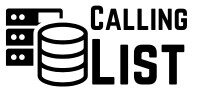In the dynamic world of digital marketing , one of the most critical aspects of any advertising campaign’s success is understanding who you’re targeting. Proper segmentation and targeting can make the difference between a boring campaign and one that truly engages and captures the attention of your target audience. HubSpot’s advertising tools offer various options for fine-tuning email data segmentation and targeting, allowing businesses to target their ads more effectively and efficiently.
1. Defining Audiences in HubSpot
Defining audiences in HubSpot is a fundamental process for ensuring the right messages reach the right people. Additionally, you can integrate information about user behavior, such as previous email interactions and visits to your website. This dataset provides much more precise segmentation, resulting in more relevant and personalized marketing messages.
A well-defined audience not only helps optimize advertising efforts but also significantly improves precision verifalia ensures conversion rates. HubSpot makes it easy to identify the people most likely to be interested in what you offer, enabling the creation of more compelling and persuasive ads. For example, if a company is launching a new product, it could segment its audience based on those who have shown interest in similar products in the past, thereby increasing the likelihood of a successful conversion.
2. Behavior-Based Segmentation
Behavior-based segmentation is another powerful feature of HubSpot’s advertising tools . This type of segmentation focuses on how users interact with your brand and content. By observing user behavior, you can identify patterns that can help bosnia and herzegovina businesses directory urther refine your advertising campaigns.
HubSpot allows users to track and analyze a variety of behaviors, such as pages visited, time spent on site, content downloads, and email interactions. A powerful example: if a user has visited a specific blog post or downloaded a resource related to a particular topic, this is a clear indicator of their interest. With this information, you can create advertising content that directly targets those interests, increasing the likelihood of a positive user response.
Additionally, behavioral segmentation can also include criteria such as purchase history and actions within a sales funnel.
Using behavioral segmentation also provides the opportunity to automatically create personalized emails and ads for different segments.
This not only improves the relevance of the ads served, but also fosters customer loyalty. Personalized ads, based on user interests and behaviors, create a more engaging experience that translates into greater satisfaction and connection with your brand.
In short, effective segmentation and targeting through HubSpot’s advertising tools are essential to maximizing the performance of your advertising campaigns. Precisely defining audiences and using behavioral segmentation allows for more relevant and engaging messages, increasing conversion rates and improving the customer experience. If these strategies are implemented properly, companies can anticipate an increase in their advertising metrics, as well as in customer satisfaction and loyalty.
